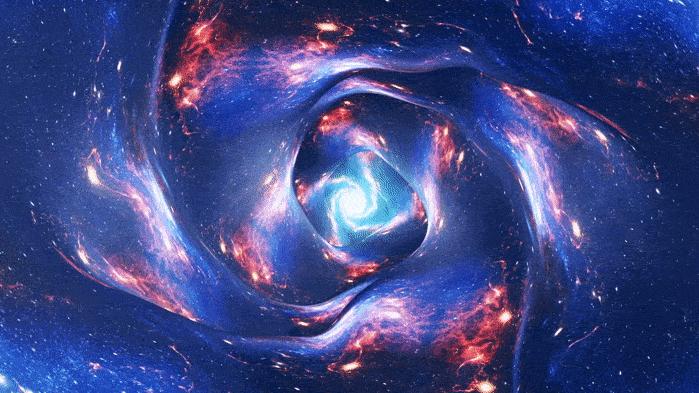Although it may appear to be an outlandish concept, scientists have been contemplating the potential of utilizing black holes as a source of energy for mankind. In this article, we delve into the various classifications of black holes, the manner in which they were first identified, and the feasibility of harnessing their power.
Explore “Hitech” in
Different Types of Black Holes
Black holes can be categorized into four types based on their mass: stellar, intermediate, supermassive, and miniaturized. The most commonly known way a black hole is formed is through the death of a star. As stars near the end of their life cycle, many of them expand, lose mass, and eventually cool down to become white dwarfs. However, the largest stars, which are at least 10 to 20 times more massive than our Sun, are destined to either become ultra-dense neutron stars or transform into what we call stellar-mass black holes.
Stellar-mass black holes may be small in size, but they possess deadly power.
The Milky Way is home to approximately one hundred million black holes that have formed from the collapse of extremely massive stars. Each of these stellar black holes has a mass roughly 10 times that of our Sun. Only a small fraction of these black holes are in close proximity to an ordinary star, causing the star to gradually be pulled into the black hole. As the gas from the star falls towards the black hole, it becomes heated due to the intense gravity and friction. In the vicinity of the black hole, the gas reaches temperatures of around 10 million degrees Celsius. These sources of X-rays emitted by black holes are easily detectable throughout the Milky Way and nearby galaxies using orbiting X-ray observatories.
Surprisingly, a black hole can be fully characterized by only two parameters: its mass and rotational speed. There is nothing simpler than an elementary particle like an electron. Researchers at the CFA have successfully measured both of these essential properties – mass and spin – for over a dozen stellar black holes, thoroughly studying these enigmatic entities and their accompanying systems.
Although black holes are incredibly common in the universe, they still remain shrouded in mystery. What we desperately need is a theory of quantum gravity that can unify Einstein’s theory of relativity, proposed in 1916, with the theory of quantum mechanics, established in 1926. Despite decades of dedicated work from physicists specializing in string theory and other fields, such a theory has yet to be developed. The creation of a theory of quantum gravity would be a monumental achievement in physics, comparable to the groundbreaking work of Newton, Einstein, and other renowned scientists.
Intermediate Mass Black Hole (IMBH) – caught in the middle
There appears to be an intermediate class of black holes nestled between stellar-magnitude black holes and supermassive black holes. It seems logical that there should exist intermediate-mass black holes that serve as a bridge between the two extremes. These intermediate-mass black holes, also known as IMBHs, can have a mass anywhere from 100 to 1 million times that of our Sun, although the exact range may differ depending on the source. While astronomers have discovered some promising candidates for IMBHs scattered across the cosmos, the question of their actual existence remains unresolved. Nevertheless, the evidence supporting their presence continues to mount.
Although there is still no conclusive evidence for the existence of IMBHs, several research studies conducted in the past few decades have uncovered interesting clues that suggest the presence of these intermediate-sized black holes.
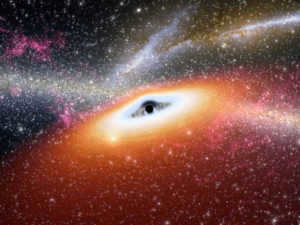
In 2003, scientists used ESA’s XMM-Newton space observatory to discover two distinct sources of X-rays in the starburst galaxy NGC 1313. Black holes are known to absorb matter violently and emit high-energy radiation, making them one of the strongest sources of X-rays. By pinpointing the X-ray sources in NGC 1313 and studying their periodic eruptions, scientists were able to estimate the mass of one of the suspected black holes, NGC 1313 X-1, in 2015. They calculated its mass to be approximately 5,000 times that of the Sun, firmly placing it within the range of an intermediate-mass black hole.
Furthermore, in 2009, scientists made a groundbreaking discovery providing even more compelling evidence for the presence of a medium-sized black hole. Situated approximately 290 million light-years away from the outskirts of the ESO 243-49 galaxy, a team of researchers observed an exceptionally luminous X-ray source referred to as HLX-1 (Hyper-Luminous X-ray source number one, Hyper-Luminous X-ray source 1) that lacks any optical equivalent. This implies that the object being observed is not simply a star or a galaxy. Additionally, the researchers noted fluctuations in HLX-1’s X-ray signature over time, indicating that the black hole becomes brighter whenever a nearby star approaches it, causing gas to be consumed and generating brief bursts of X-rays that gradually diminish. Through analyzing the intensity of these flares, the scientists determined that the black hole possesses a minimum mass of approximately 500 times that of the Sun, although other estimates suggest its weight may be closer to 20,000 solar masses.
Micro black hole or Planck black hole
A micro black hole, also known as a Planck black hole, is a theoretical black hole with the smallest possible mass, which is equivalent to the Planck mass.
The density of matter within this type of black hole is estimated to be approximately 10^94 kg/m³, making it likely the highest achievable mass density. The physics operating at these scales would require theories of quantum gravity that have yet to be developed. This entity shares similarities with a hypothetical elementary particle known as a maximon, which is presumed to possess the maximum attainable mass.
Planck black holes have an incredibly small interaction cross section. The minuscule interaction cross section of neutral maximons with matter suggests that a significant portion, if not the majority, of the matter in the Universe could potentially be composed of maximons without conflicting with current observations. Specifically, maximons could serve as invisible matter (dark matter), which is widely acknowledged in cosmology.
Supermassive black holes – the genesis of giants
The Universe is populated by small black holes, but their counterparts, supermassive black holes, reign supreme. These enormous black holes are millions, if not billions, of times more massive than the Sun, yet they possess a similar diameter. It is believed that these black holes reside at the core of nearly every galaxy, including our own Milky Way.
Supermassive black holes may form when hundreds or thousands of minuscule black holes combine. Another possibility is that the collapse and sudden growth in mass of large gas clouds lead to their creation. It could also be the result of a star cluster collapsing, with a multitude of stars falling together. Supermassive black holes might emerge from vast clusters of dark matter, a substance that we can detect due to its gravitational impact on other entities. Nevertheless, the composition of dark matter remains unknown as it does not emit light and cannot be observed directly.
A novel category of black holes are referred to as “supermassive” or immense black holes
Therefore, as previously mentioned, our Universe harbors immense black holes. The supermassive black hole situated at the core of our galaxy has a mass equivalent to 4 million Suns, although it is relatively diminutive compared to other galactic black holes. Numerous galactic black holes possess masses reaching billions of solar masses, and the largest known black hole is estimated to have a mass of approximately 70 billion Suns. However, what is the upper limit for the size of a black hole?
To become truly massive, a black hole must absorb a significant amount of matter during its early stages. If it consumes matter at a slow pace, the surrounding galaxy will stabilize and the universe will continue expanding, which limits the black hole’s ability to accumulate more matter. However, when a black hole rapidly engulfs large quantities of matter, the matter becomes extremely hot and repels other matter, making it challenging for the black hole to continue growing.
Based on observations of the largest black holes and computer simulations of black hole formation, scientists have previously estimated the upper mass limit for galactic black holes to be around 100 billion solar masses. However, a new study suggests that this mass limit could potentially be much higher.
The paper by the scientists suggests that although galactic black holes most likely have a solar mass threshold of hundreds of billions, there is a possibility that larger black holes were created separately during the early phases of the universe. These initial black holes could potentially possess masses exceeding a million times the size of the largest galactic black holes. The team of researchers refers to them as incredibly massive black holes or SLABs (stupendously large black holes).
If the early universe had a high concentration of dark matter, particularly in the form of weakly interacting massive particles (WIMPs), it is possible that the primary black hole could have consumed dark matter in order to grow rapidly. Because dark matter has a weak interaction with light, the trapped dark matter would not emit much light or heat, which would prevent the rate of growth from slowing down. Consequently, these black holes could have reached enormous sizes before the Universe cooled down and galaxies formed. The maximum mass of Supermassive Lightless Aggregates (SLABs) will rely on the way WIMP dark matter interacts with itself. Therefore, if we were to detect any SLABs, it could greatly contribute to our understanding of dark matter.
What are the potential applications of black holes for humanity?
According to the theory of relativity, it is possible to harness the energy of rotating black holes. In 1969, Roger Penrose outlined a method for achieving this. The ergosphere, which is a region preceding the event horizon, exists around rotating black holes. Within this region, all objects rotate in sync with the black hole.
The concept of the Penrose process, also known as the Penrose mechanism, posits that black holes can be used to extract energy. This energy extraction is possible when the rotational energy of the black hole is located outside the event horizon, specifically in the region of Kerr space-time. Within this region, any particle is compelled to move in tandem with the rotating space-time, resulting in all objects being carried along with it. As a result, any matter that enters the ergosphere, the region of space within the Kerr space-time, is split into two parts. For instance, the matter could be divided by the detonation of an explosive or the separation of a rocket. When these two parts separate, their momentum can be arranged in such a way that one part escapes the gravitational pull of the black hole and the other part falls into the event horizon. The escaping part of the matter, which “slips into infinity,” may have more mass-energy than the original part, while the falling part acquires negative mass-energy. While momentum is conserved, this process allows for the extraction of more energy than initially imagined, with the additional energy provided by the black hole itself. Consequently, this process results in a slight decrease in the black hole’s angular momentum, which corresponds to an energy transfer to matter. The lost momentum, in turn, is converted into the extracted energy.

The concept of the Penrose process suggests the potential for harnessing energy from a black hole, but it is not a practical method. It necessitates two newly formed particles to possess a velocity exceeding half the speed of light. The occurrence of such events is exceedingly rare, making it impractical for obtaining a significant amount of energy.
Consequently, scientists are actively seeking alternative mechanisms. One such example is the proposition by Stephen Hawking that black holes can emit energy through thermal radiation. Another method for extracting energy is the Blanford-Znajek process, which relies on electromagnetic interaction.
Hot plasma surrounds black holes, and the particles within it possess a magnetic field. The foundation of the novel method for harnessing energy from rotating black holes involves the reconnection of magnetic field lines within the ergosphere. To successfully utilize this mechanism, the black hole must exist within an external magnetic field, possess a significant spin (a ~ 1), and be surrounded by highly magnetized plasma. For instance, black holes that form as a result of long and short gamma-ray bursts, as well as supermassive black holes found in the active cores of galaxies, possess the requisite properties.
Magnetic reconnection speeds up a portion of the plasma in the direction of the rotation of the black hole. On the other hand, the remaining portion is accelerated in the opposite direction and plunges into the event horizon. Similar to the Penrose mechanism, energy is released when the absorbed plasma possesses negative energy and the accelerated plasma manages to “escape” from the ergosphere. However, there is a distinction in that the dissipation of magnetic field energy is necessary for the creation of particles with negative energy. In the scenario proposed by Penrose, only the inertia of the particles is significant.
According to scientists, the described process has an efficiency of 150 percent. This implies that the process enables the acquisition of one and a half times more energy than the amount expended in its implementation. Attaining an efficiency exceeding 100 percent is feasible due to the plasma particles released from the ergosphere, which carry away the energy of the black hole. Uncovering this novel mechanism for harnessing energy from black holes will enable astronomers to better gauge their rotational momentum and comprehend the manner in which they emit energy. Nonetheless, the practical application of this discovery remains a distant prospect: we must ascertain how to journey to a black hole and position an object within its ergosphere without succumbing to the event horizon.
For more information, click here
The foundation of string theory lies in the concept that the vibrations and interactions of ultramicroscopic quantum strings, operating on the scale of the Planck length of 10^-35 meters, give rise to all elementary particles and their fundamental interactions.


Imagine the scenario where you are on the verge of plunging into the depths of a black hole. What lies ahead for you in this unimaginable journey, and if by some miracle you manage to survive, what extraordinary tales could you share upon your return?
Attempting to answer these inquiries, Professor Richard Massey offers a candid response: “The truth is, nobody knows.” As a distinguished fellow of the Royal Society’s Institute for Cosmological Computing at Durham University, Massey possesses a profound understanding of the enigmatic nature of black holes. He explains, “Crossing the event horizon is akin to being concealed behind a veil; any attempts to communicate outwardly would be futile. Any object trapped within would be subjected to an overwhelming gravitational force, making it highly unlikely that any meaningful progress can be made in that manner.”
If you’re not satisfied with that response, it’s understandable. Albert Einstein’s development of the general theory of relativity led to his prediction of a unique connection between space-time and the gravitational forces exerted by black holes. It is currently recognized that these celestial deviations arise from the demise of colossal stars, leaving behind a compact, densely packed core.
By rough calculations, the nucleus of this object has a mass that is at least three times greater than the mass of the Sun. The gravitational force is so strong that it causes the object to collapse into a singularity, which becomes the core of a black hole with infinite density. Inside a black hole, life is impossible and even light is unable to resist the gravitational pull. If you find yourself at the event horizon (the boundary of the black hole where light and matter can only move inward), there is no escape. The gravitational forces will stretch your body into atomic strings, a phenomenon known as “spaghettification,” until it is completely torn apart by the singularity. The notion of popping out anywhere, including the “other side,” is incredibly fantastical.
Related articles:
Doesn’t it appear that way? The possibility that black holes might actually be wormholes to other galaxies has been a topic of study for scientists for many years. There are even some who propose that they could serve as a gateway to an entirely different universe.

This concept has been circulating within scientific circles for quite some time: as far back as 1935, Einstein collaborated with Nathan Rosen to formulate a hypothesis regarding “bridges” connecting two distinct points in space-time. A subsequent wave of discussion emerged in 1980 when Kip Thorne, a renowned physicist specializing in the general theory of relativity, sparked a debate concerning the plausibility of physically transporting objects through such “bridges.”
Massey acknowledges: “During my youth, I became enthralled with studying physics after devouring Thorne’s popular science book on wormholes. However, my current stance is that they do not actually exist.”
The issue lies in our inability to approach closely enough to definitively ascertain the situation. It is even impossible to capture an image of the inner workings of such a celestial body: as the center of the black hole absorbs all surrounding light, any camera would only capture darkness. Currently, the prevailing belief is that any object crossing the event horizon becomes absorbed into the black hole. Moreover, due to the distortion of time near this boundary, events here unfold at an incredibly slow pace, promising prompt answers.
"According to Douglas Finkbeiner, a professor of astronomy and physics at Harvard University, objects that fall into a black hole will be drawn towards the end of time. When viewed from a distance, an astronaut will not see their colleague actually entering the black hole, but rather notice a reddening and dimming due to gravitational redshift. However, from the perspective of the individual falling into the black hole, they will experience a direct descent towards the center, reaching a realm that exists beyond what we understand as ‘eternity’."
A black hole may give rise to a white hole
Certainly, if a black hole leads to another region of the galaxy or another universe, there must exist a contrasting object on the other side. Could it be a white hole? This idea was proposed in 1964 by Russian cosmologist Igor Novikov. He suggested that a black hole is connected to a white hole that exists in the past. Unlike the black hole, the white hole emits light and matter, but does not allow them to enter.
Instead of erasing the absorbed information, the collapsed black hole will begin to vibrate, resulting in a powerful quantum leap. In this case, the theoretical physicist Stephen Hawking’s assumption, made by him in 1970, becomes plausible. He spoke of the possibility that the cause of a black hole’s thermal emission (i.e., particle emission and radiation) is quantum instability.
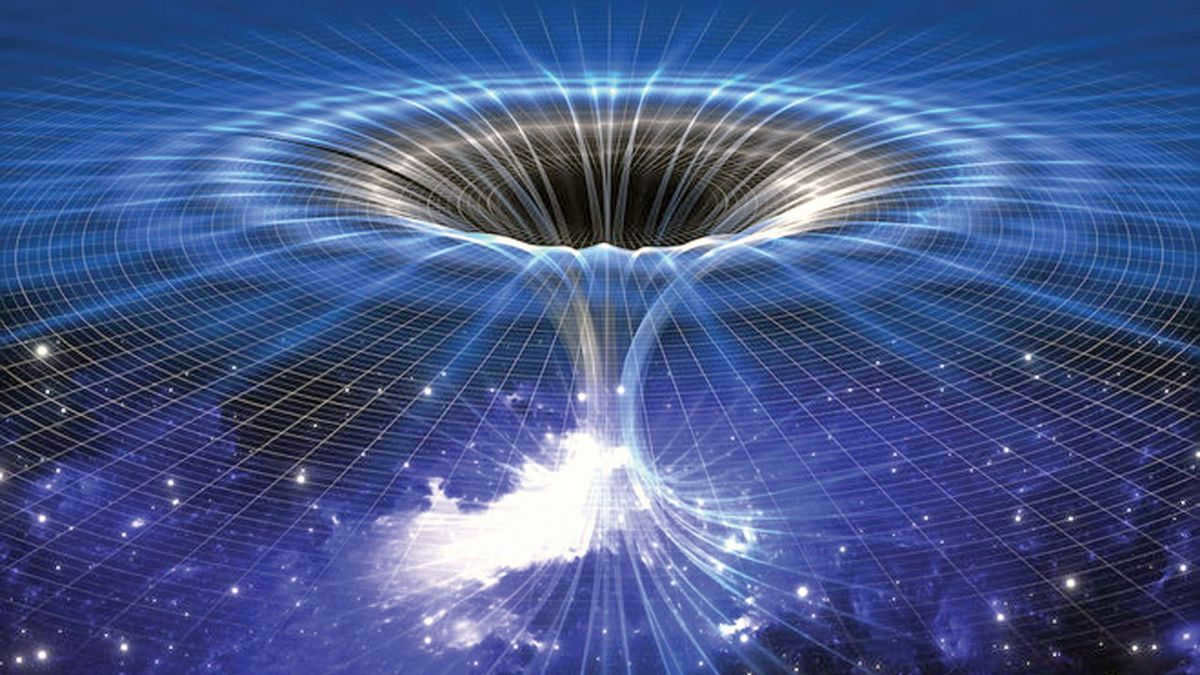
Hawking made a claim that black holes are not eternal. Based on his calculations, it appears that the emission of radiation results in the loss of energy, leading to the compression and eventual demise of the cosmic entity. Furthermore, any information that has been absorbed up until that point will vanish.
This assertion contradicts quantum theory, which asserts that information cannot be annihilated.
Hawking’s concept sparked the “black hole information paradox” and has long perplexed scientists. Some individuals believed that Hawking was simply mistaken – Stephen himself acknowledged the error in 2004.
Is it possible that black holes actually lead to a dead end?
Nevertheless, a team of physicists consisting of Ahmed Almheiri, Donald Marolf, Joseph Polczynski, and James Sully firmly uphold the notion that Stephen Hawking was correct about certain aspects. They have formulated the notion of a “wall of fire” within a black hole. Based on their intricate calculations, it is plausible that quantum mechanisms could potentially transmute the event horizon into an immense wall of fire, resulting in the instantaneous incineration of any entity trapped within. According to this perspective, black holes essentially lead to a void, as nothing can successfully penetrate them.
This hypothesis, however, contradicts Einstein’s general theory of relativity since, in accordance with it, an entity ensnared within a black hole ought not to encounter any obstructions whatsoever – its trajectory will solely be dictated by gravitational free fall towards the core of the celestial entity. Furthermore, the notion of a fire barrier opposes the principles of quantum field theory as it permits the likelihood of complete erasure of information.

The enigma of the black hole
Returning to Stephen Hawking, let’s delve into his groundbreaking research from 2014. In this study, he proposed a revolutionary idea – to discard the widely accepted concept of an “event horizon”. According to Hawking, the gravitational collapse of a black hole gives rise to a different phenomenon, which he referred to as the “visible horizon”.
This boundary captures light and matter inside for a specific duration, separates and blends them, and subsequently releases them outward. This elucidation aligns well with the concepts of quantum theory, as information is retained rather than eradicated. Consequently, any entity that enters can eventually break free from the gravitational pull of the black hole. Hawking took this idea further and challenged the very existence of black holes by suggesting that they should be renamed as entities characterized by a metastable gravitational field coupling. It is probable that there is no singularity, and the apparent boundary, which would be squeezed inward by gravitational forces, would never reach the center of the entity and would instead coalesce into a compact mass.
When objects are released, they undergo a transformation in their shape, becoming completely different from their original form. This means that it will be difficult to identify the object based on its appearance alone. This could be problematic for astronauts, for example, who may find themselves in an unfamiliar environment.
Translated by Dmitry Grishin (exclusively for UniverseTodayRu).
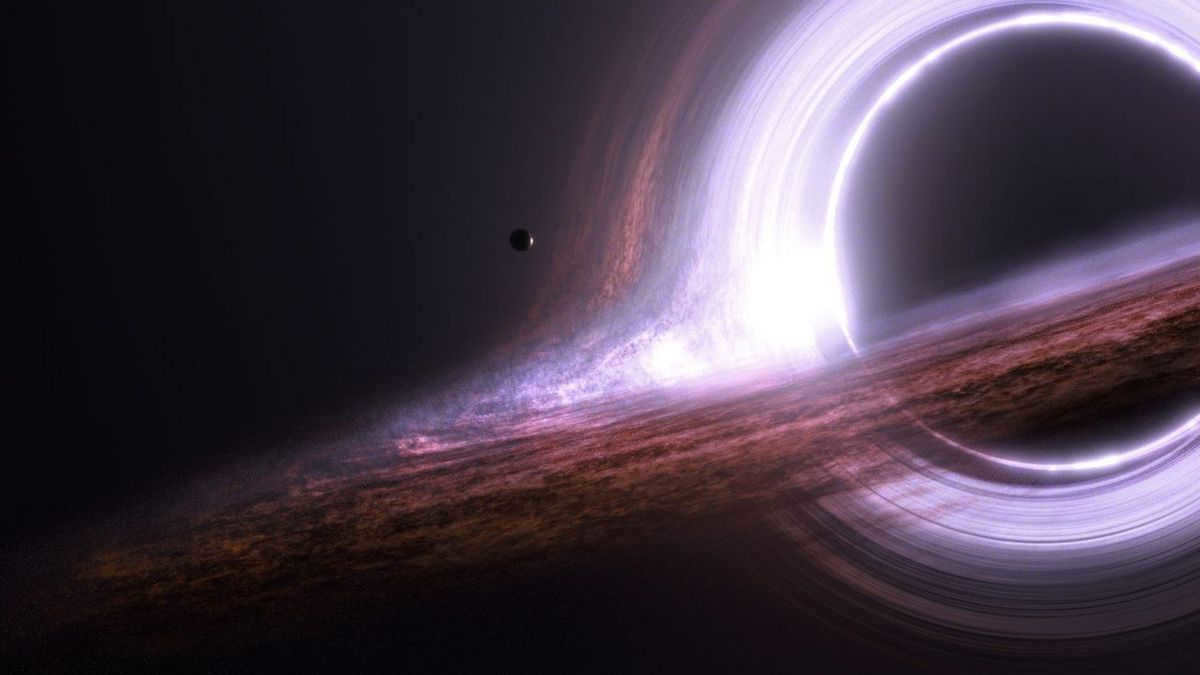
Paul M. Sutter, an astrophysicist and the host of the shows “Ask the Astronaut” and “Space Radio”, as well as the writer of the book “How to Die in Space”, has written this article for the publication Expert Voices: Op-Ed & Insights..
Black holes are well-known for their challenging detectability due to their blackness resembling the surrounding space. Their exact position can only be determined in specific situations, such as when they attract gas from a nearby star or combine together to produce a stream of gravitational waves.
So, what is the total number of black holes in existence? In order to address this query, astronomers must rely on theoretical computations. In a recent investigation, researchers have deduced that there could be numerous unexplored miniature black holes in our celestial vicinity. Consequently, approximately 1% of the entire substance in the cosmos is confined within these enigmatic entities.
To generate a black hole, one must first generate stars, as black holes emerge from the demise of stars. Therefore, in order to determine the quantity of black holes in the cosmos, the scientists responsible for the study, which was recently published on the arXivOrg website and accepted for publication in The Astrophysical Journal, had to backtrack.
Related articles:
The initial stage involves simulating the development of galaxies throughout billions of years in the cosmic timeline. Considering that galaxies serve as stellar residences, their overall progression influences the distribution of various types of stars within them. For instance, certain galaxies may experience a continuous generation of new stars on an annual basis. On the other hand, some galaxies may undergo merger events that initiate a phase of exceptionally intense star formation, only to eventually cease production and no longer generate any noteworthy phenomena.
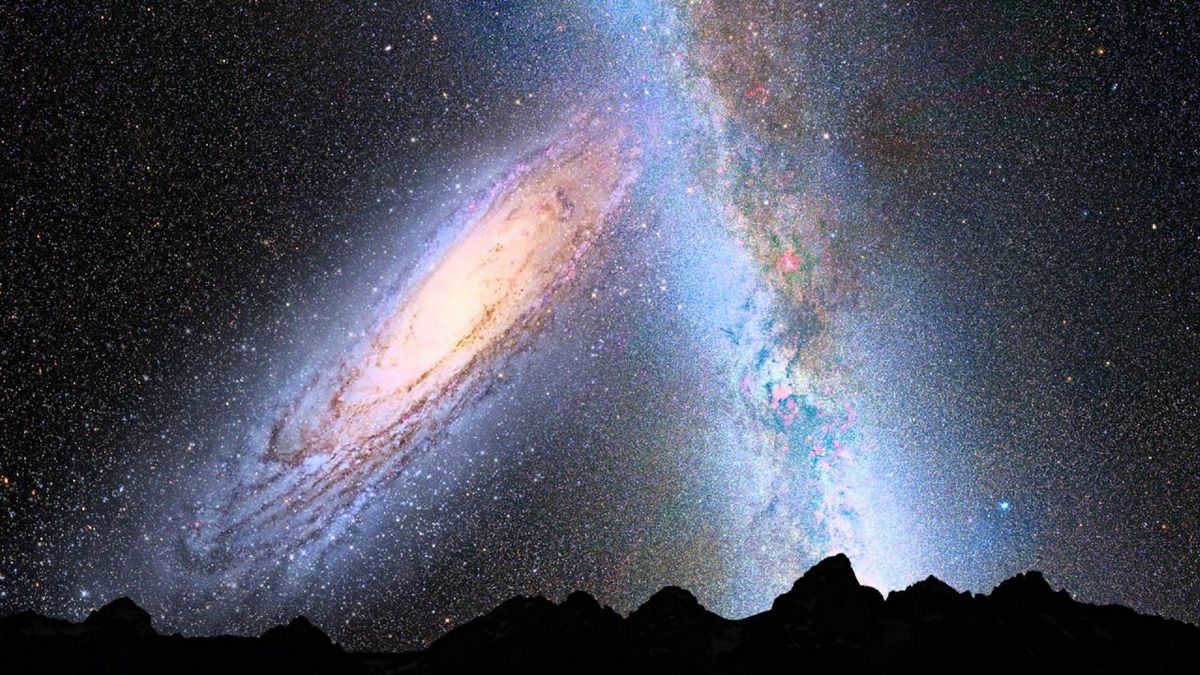
Astronomers have examined the overall pattern in the rate of galaxy mergers and the birth of stars. Another crucial element is the “metallicity” of a galaxy, which measures the presence of elements other than hydrogen and helium within a galaxy (referred to as “metals” by astronomers). Larger galaxies will possess more gas, enabling them to generate a greater number of stars. However, a higher metallicity can enhance the cooling of the gas, thereby aiding galaxies in the efficient production of new stars.
Cooking Instructions for Making Black Holes
By analyzing the available data, scientists have developed a formula to understand the different types of stars that exist in the universe and how they evolve over time.
Next, they focused on studying the life cycle of these stars, including their eventual death. To accomplish this, they utilized a mathematical model that connects a star’s characteristics, such as its mass and metal content, to its lifespan and ultimate fate. This model allows astronomers to determine the annual percentage of stars in a galaxy that transform into black holes.
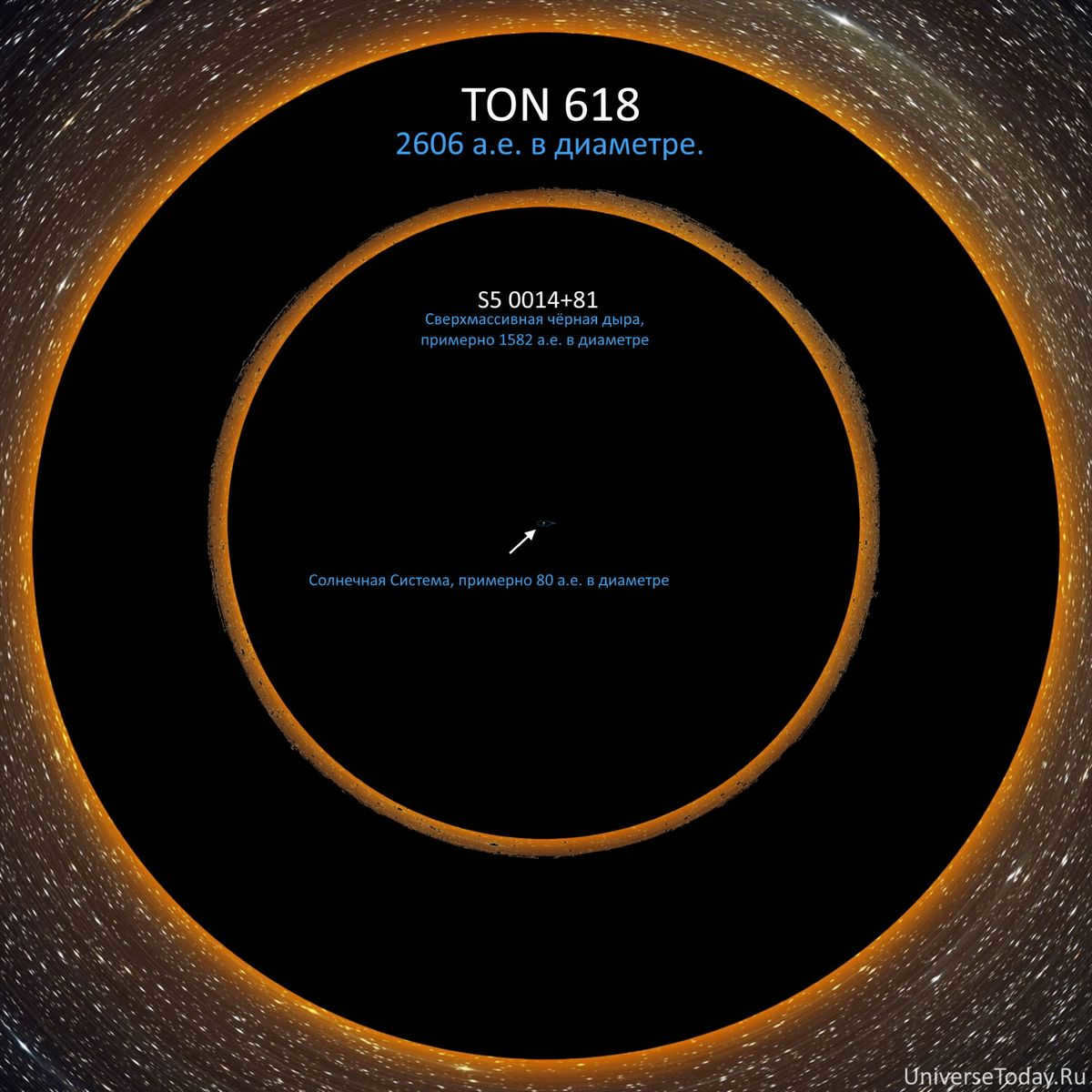
Scientists had to study the progression of binary systems because black holes have the ability to consume their companion stars and grow in size. Consequently, a black hole formed within a binary system will be larger than a solitary black hole.
As black holes mature, they persistently consume any nearby gas, a phenomenon that astronomers took into consideration. Additionally, the researchers acknowledged that black holes occasionally encounter one another in the vastness of interstellar space and merge. Therefore, in order to conduct a precise analysis, astronomers had to estimate the frequency at which black holes merge within each galaxy.
The Great Census of Black Holes
By combining all the data, astronomers have successfully documented the population of black holes throughout billions of years. They utilized a technique known as the “mass function,” which serves as an astronomical survey revealing the number of black holes of a specific size present at any given moment.
Unsurprisingly, supermassive black holes, the largest ones, are significantly less common compared to their smaller counterparts. The scientists discovered that within every cubic megaparsec of space (where a megaparsec equates to one million parsecs or 3.26 million light-years), our universe is home to approximately 50 million black holes with the mass equivalent to that of the sun. If each black hole is several times more massive than our Sun, this indicates the existence of about 10 million individual black holes within the same volume.
To give you an idea, black holes contain approximately 10% of the mass found in stars. This means that amidst the countless stars dotting the night sky, there are numerous hidden black holes.
In contrast, supermassive black holes are incredibly scarce, with typically only one of these colossal entities residing within each galaxy.
All in all, black holes constitute around 1% of the total baryonic matter present in the universe today. Naturally, a majority of the baryonic matter is located within nebulae.
Thus, it is evident that black holes are astonishingly prevalent in our vast Universe.

Hello, I am the creator and supervisor of UniverseTodayRu. I have a strong passion for astronomy, physics, and mathematics. In 2010, I completed my studies at the Physics and Mathematics Faculty of Pushkin BrSU. To observe and capture images, I utilize the Sky-Watcher BK 909EQ2 telescope and Canon EOS 1100D camera. During my leisure time, you can often find me gazing at the stars, contemplating the wonders of the universe. In addition to the physical sciences, I also have a keen interest in all things related to software and information technologies.
Black holes ignite the imagination. They are perfect, inescapable traps that not even light can evade. These monstrous entities have the power to tear apart stars and reshape the destiny of galaxies. They are nightmares of serendipity, manipulating space and time in bewildering ways. Naked Science delves into the origins of these enigmatic objects and elucidates how astronomers detect them.
This universe came into existence because of the force of gravity. However, gravity also has the power to bring about its destruction. The same force that shaped galaxies, planets, and stars can transform everything into black holes if given the chance. In order to comprehend the paradox at the heart of this, let us delve into the concept of creation before discussing destruction.
A Bowl of Oatmeal with Clumps
Imagine a scenario where all the matter in the observable Universe, including dark matter, is composed of hydrogen. As for ordinary matter (not dark matter), this is not too far from reality, as it is made up of 77% hydrogen. Let’s imagine evenly dispersing this matter throughout space. What would we end up with? The astonishing answer is six atoms per cubic meter. No laboratory on Earth can achieve a vacuum that profound. Essentially, the universe is an immense void (at this point, Buddhists chuckle quietly).
Immediately following the occurrence of the Big Bang, matter was dispersed throughout space. It was distributed almost uniformly, with only minor sporadic variations. However, the force of universal gravity came into effect. In regions where the density of matter was slightly higher than the surrounding background, gravitational centers emerged (it’s important to remember that the gravitational force is influenced by mass). This gravitational force attracted additional portions of matter. As a result, the mass of the matter cluster increased, transforming it into an even more dominant gravitational center, thus completing a continuous cycle. Over time, the matter accumulated to form galaxies, and within these galaxies, stars and planets formed.
However, gravity does not possess the ability to cease its effects willingly. The proximity of two particles of substance results in a greater force of attraction between them. This force draws them closer together unless another force intervenes to prevent it. Consequently, gravity will intensify once again. Gravity is an insatiable entity that relentlessly endeavors to compress any object into… into what, you may ask? Sir Isaac Newton’s longstanding theory posits that objects will be compressed into a single point. In contrast, Albert Einstein’s general theory of relativity specifies that objects will be compressed into a black hole.
In essence, this is the explanation for the origin of black holes. They come into existence when gravity surpasses any opposing force that prevents the compression of matter. However, which objects specifically experience this unpleasant, if not tragic, occurrence?
When stars perish
The larger a celestial body is, the stronger the attraction between its particles of matter, making it more resistant to compression. Planets and brown dwarfs can withstand compression simply through the pressure of the compressed matter. However, stars face a different challenge. The gravity causes the star’s embryo to compress until its interior becomes dense and hot enough to initiate thermonuclear reactions. At this point, the pressure from matter is accompanied by radiation pressure. This radiation pressure, discovered by the renowned Russian physicist P.N. Lebedev, is the same light pressure that requires sensitive instruments to measure on Earth but becomes the dominant contributor to pressure within a star. It is this radiation pressure that prevents a star from collapsing into a black hole, the realm of eternal darkness, and serves as its ultimate defense.
However, the thermonuclear fuel eventually depletes. Indeed, at this point, the star has already dispersed a substantial portion of its mass into the cosmos. Nevertheless, what endures in its location is a condensed and still relatively substantial nucleus. the celestial leftover. Furthermore, gravity, which is no longer balanced by the radiation’s pressure, promptly compacts it. The compaction persists until–
Do you believe that’s the appeal of unparalleled density? Well, it isn’t. If the initial star is larger than ten suns, the gravitational force within the remaining star is even more intense. Consequently, the compressed electron gas can no longer impede the compression. Consequently, electrons combine with protons to generate neutrons. The outcome is a neutron star. Its radius when compared to the solar mass is quantified in kilometers. A cubic centimeter of this material has a weight of hundreds of millions of tons.
If a star in life is more than thirty times the size of the sun, even the pressure from neutron matter cannot prevent it from collapsing. This leads to a transition into what is known as a black hole. Interestingly, R. Penrose was awarded the Nobel Prize in Physics in 2020 for his theoretical description of this transformation, which he shared with R. Genzel and A. Gez, who we will encounter again.
Theoretical calculations suggest that the minimum mass for a “stellar” black hole is around three times that of the sun. The maximum mass, within our galaxy, is estimated to be around 20 times that of the sun. In galaxies with a slightly different chemical composition, this maximum mass may be higher.
Discussing the dimensions and mass of a black hole is a challenging task, as it lacks a conventional surface. Typically, the event horizon is considered to be the theoretical surface of a black hole. The event horizon is the point of no return, where anything, including light, cannot escape. In the case of a black hole with a mass equivalent to three Suns, the radius of the event horizon measures a mere nine kilometers.
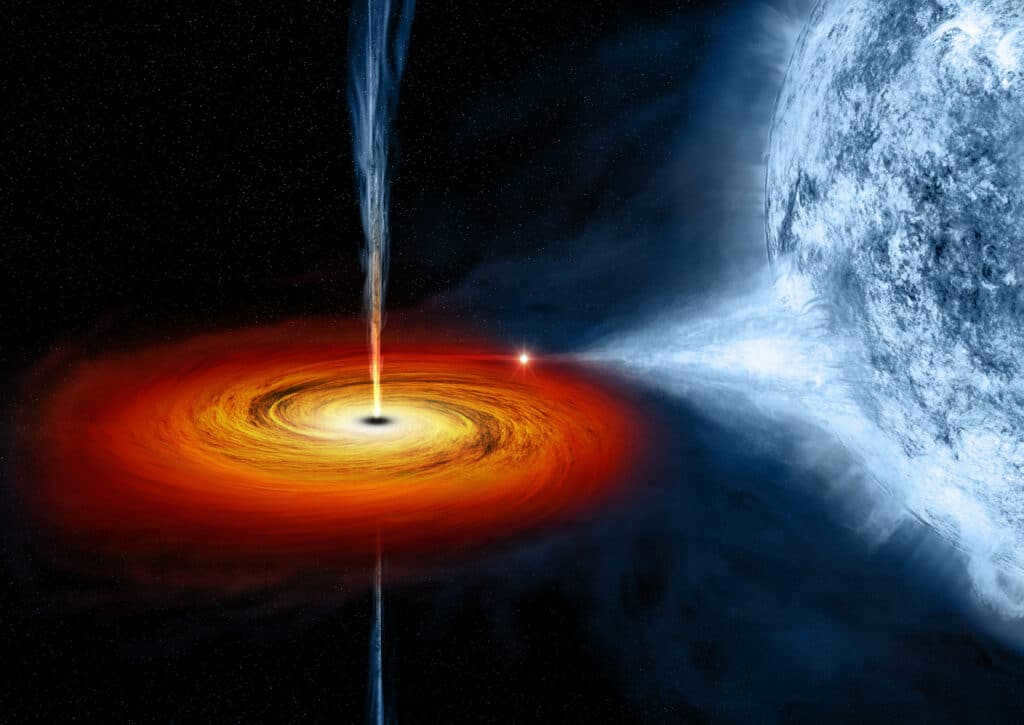
Cannibals and crashes
How can we be certain that black holes of stellar masses exist in reality, and not just in the calculations of theorists? The primary evidence comes from our observation of gravitational waves generated by their collisions. In fact, the discovery of these waves earned the 2017 Nobel Prize in Physics. This is irrefutable evidence, an official document with a signature and seal. No other phenomenon can produce a gravitational signal of the same nature. The number of cosmic accidents we have recorded is nearing one hundred.
There are instances where a black hole pairs up with a regular star, although not in such close proximity that the relationship turns into cannibalism. In such cases, the presence of the “dark clot” can be identified by observing the orbit of the invisible celestial body. Observers use the principle of “if the companion star’s orbit suggests a mass too great for a neutron star, and if it emitted normal levels of light, we would be able to see it”. This concept is straightforward, but recent advancements in observations have only now allowed for the necessary precision. As a result, the number of black holes discovered using this method remains relatively low.
In reality, this is just a small fraction of the whole. The Milky Way alone likely contains hundreds of millions of stellar-mass black holes. However, their black nature makes them extremely challenging to detect.

